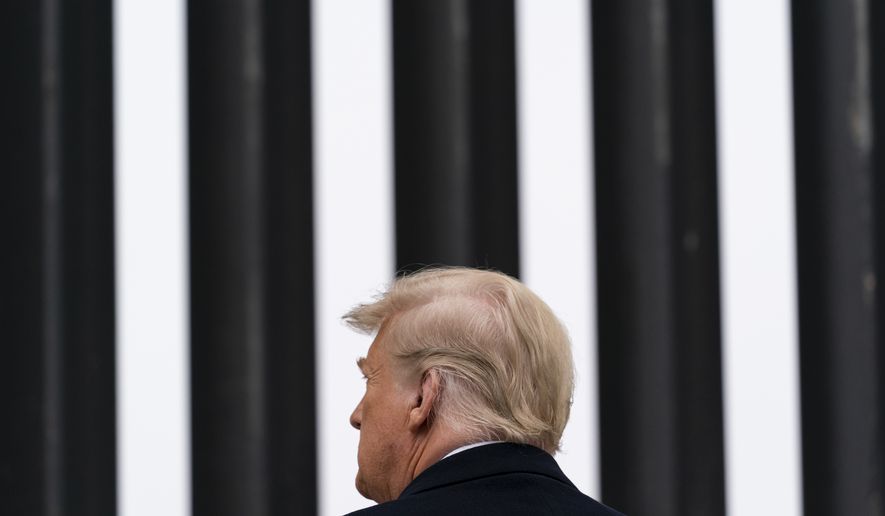The Army Corps of Engineers cut corners in order to beat deadlines for President Trump’s Mexico border wall and get money out the door before it expired, according to an audit Thursday by the Government Accountability Office, which identified $4.3 billion in no-bid contracts for the project.
GAO investigators said the previous administration, rushing to meet Mr. Trump’s goals on a signature campaign promise, erected 450 miles of wall panels, but fell short on other aspects of the “wall system” such as roads and sensors.
Along the way, the watchdog agency said, the Army Corps of Engineers skipped over some of its own usual process safeguards to award the contracts.
“By focusing on expediency in contracting, the government risks paying higher costs,” GAO said.
The audit also said having both Homeland Security and the Army Corps of Engineers doing construction at the same time will lead to maintenance issues down the road.
At some point, Customs and Border Protection, the Homeland Security agency that oversees the wall, will have to find an additional $1.6 billion over 30 years to maintain the wall built by the Corps.
“As we have previously reported, CBP does not have enough money in its current budget to fund the border wall system program — for which CBP will have to request additional funds and is using funds from another CBP program in the meantime,” the audit said.
Mr. Trump secured about $5 billion in money from Congress for his border wall over his four-year term, but he felt that was too little. He flexed presidential emergency powers to siphon about $10 billion more from unrelated Pentagon accounts toward wall building.
GAO said the Corps rushed to obligate more than $6 billion of the money because the authorization was about to expire and the money would have been unavailable.
The Corps imposed a December 2020 deadline on a number of contracts, pushing them to focus more heavily on erecting wall panels and devote less attention to other parts of the wall system, such as sensors and other technological enhancements, the audit found.
The Corps “met the goal of completing approximately 450 miles of border barriers, but most of these miles represented the installation of wall panels, rather than the completion of the entire wall systems,” the GAO audit concluded.
The concept of an integrated wall system to cut down on illegal immigration from Mexico was a major selling point for Trump officials.
In one instance the Army Corps had set a January 2021 deadline for a contractor, but then rewrote the schedule and added eight more months. The change allowed the contractor to accelerate work on the wall panels while putting off the electrical and technology work of the wall system.
The December 2020 deadline correlated with Mr. Trump’s campaign-trail promise of having 400 to 450 miles of wall erected by the end of last year.
The GAO said the locations selected for wall building were also schedule-driven, rather than reflecting the priorities for overall border security.
Administration officials defended those decisions, saying they built first where the government already had clear access to the land. The Pentagon also prioritized projects that it felt would be successful in cutting the flow of illegal activity, thus reducing the need for Defense Department personnel and equipment to help out at the border.
President Biden earlier this year ordered a halt to wall construction and ordered that any unspent money taken from the Pentagon be returned to those accounts. That halt has also derailed filling in the technology upgrades that the GAO says were put off to focus on erecting panels.
But the pause does give both Homeland Security and the Army Corps a chance to figure out where it stands and what projects should be pursued, the audit found.
• Stephen Dinan can be reached at sdinan@washingtontimes.com.




Please read our comment policy before commenting.